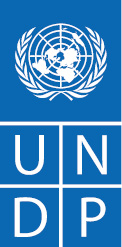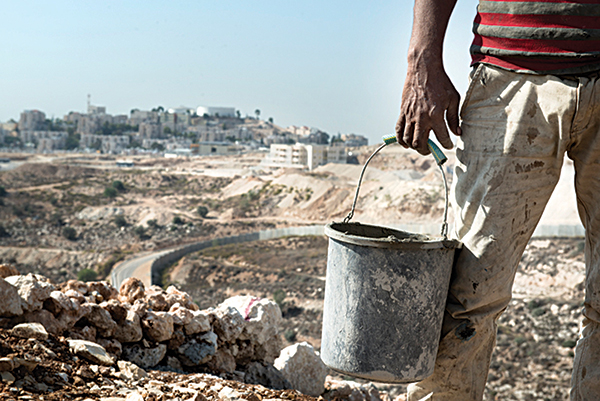
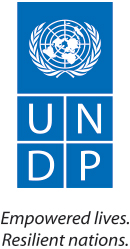
Courtesy of the United Nations Development Programme Programme of Assistance to the Palestinian People (UNDP/PAPP)
Area C – as commonly referred to in the post-Oslo era, comprises an approximate sixty-one percent of the West Bank.1 Through the 1995 Interim Agreement between Israel and the PLO, the West Bank was divided into three categories: Area A (eighteen percent of the West Bank) is home to the major Palestinian cities and houses the majority of the Palestinian population, governed under the Palestinian Authority (PA). Area B (twenty-two percent of the West Bank) is a largely rural area where Israel maintains security control and has transferred civil control to the PA. In Area C, the Palestinian government is responsible for health and education, but the infrastructure for both health and education facilities is entirely under Israeli control and discretion, as is security, civil administration, planning, infrastructure, and construction. Area C represents a critical mass of productive capital, natural resources, and fertile land that links over two hundred small urban hubs across the territory. As per the 1993 Oslo Peace Accords, it was stipulated that it would gradually be transferred to the Palestinian Authority, to be under Palestinian control by the year 1998. This transfer has yet to materialize, and a heightened occupation of Area C continues to displace the local population, create barriers towards Palestinian economic empowerment, and pose restrictions to the movement of people.
The dramatic contrast regarding the rights of individuals living in Area C is stark: Israeli citizens residing in Area C enjoy state protection through the application of Israeli civil law, just as would any Israeli living in Tel Aviv or Tiberias. They receive health care, are guaranteed labor rights, and enjoy ease of access over broad highways that slice through Area C of the West Bank and make the crossing of the Green Line practically imperceptible – for settlers riding in cars with Israeli (yellow) license plates that easily glide through check points. “Bedroom communities” of settlements sprinkle the West Bank, as do immense urban sprawls, all offering appealing economic incentives for residents: low-rate mortgages, cheap housing prices, full access to services, and spectacular landscapes. For the three hundred thousand Palestinians living in Area C,2 life is quite different. Largely deprived of the ability to link to common sanitation, water networks, and electrical grids, their attempts at improving their standard of living face myriad challenges. In recent years, most Palestinians were not able to obtain an Israeli permit to renovate, let alone build, their homes or essential infrastructure, a practice that prevents any natural community growth or expansion. Structures, including homes, built without permits are routinely demolished, and families forcibly evicted.
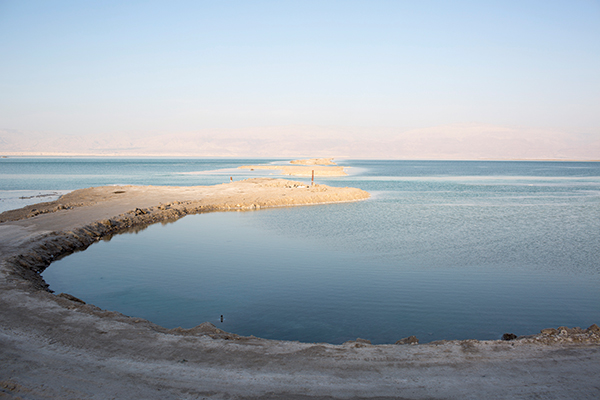
By strategically controlling Area C, the Israeli occupation and settler-economy have largely benefitted from both the resources and the geography of the area. A recent World Bank report, incorporating information received from the Palestinian Central Bureau of Statistics (PCBS), highlights the key potential of growth and development Area C could hold for the Palestinian economy if Palestinians had access and control: current loss to the Palestinian economy caused by Israeli-imposed restrictions is valued at US$ 3.4 billion.3 It is estimated that the additional tax revenues associated with a US$ 3.4 billion increase in GDP would amount to some US$ 800 million – assuming that there would be no improvements in the efficiency of tax collection, which is currently at a rate of 20% tax/GDP. Were such restrictions removed, the resulting increase in productivity could dramatically improve the Palestinian government’s fiscal position. It could reduce the current fiscal deficit by half, which in turn would enhance effectiveness of international aid, reduce dependence on donors for recurrent budget support, improve fiscal sustainability, and enhance investor confidence in the Palestinian economy.
The steady loss of land and protracted inability to foster indigenous development leaves Palestinians with few legal options. On matters of contesting land confiscation, demolition orders, or the non-granting of building permits, legal remedy for Palestinians residing in Area C can only be sought through the Israeli High Court, an onerous, costly, and normally dead-ended process. Thus, the demographic reality of increasing proximity between Israeli and Palestinian communities has led to dramatic security issues for Palestinians in particular. Every moment lost in anticipation of a political solution will see more intractable issues created over this expanse of land.
Economic Potential of Area C
The key potential sectors that can be unleashed by an eventual Palestinian control of Area C include agriculture, tourism, Dead Sea minerals, construction, telecommunication, stone mining, quarrying, and more. In addition, an overall investment in the infrastructure and administration of Area C could attract further investment and development across the entire State of Palestine in the long term.
Agriculture in Area C is one of the main sectors that could help kick-start the Palestinian economy with an estimated 326,400 dunums4 of arable land potentially available to Palestinians in Area C. With the right of access to water and other agricultural inputs, an estimated US$ 704 million could be added directly to the Palestinian GDP per year.5 This would further enhance the capacities of farming communities that have been obliged to work in urban centers, create opportunities for women, and impact food security across the State of Palestine. Currently, a viable settler-based agriculture economy flourishes across Area C. It has been estimated that Israeli settlements and their agricultural ventures are roughly valued at US$ 251 million.
Similarly, the Dead Sea minerals industry is a lucrative business that could foster further investment and development for Palestinians. It has been reported that both Israel and Jordan derive an estimated US$ 4.2 billion in annual sales from products sold in the international markets. Moreover, steady growth is anticipated in the demand for both potash and bromine; and therefore, Palestinian access and investment in this area would indeed prove profitable. It is estimated that from production and sales of potash, bromine and magnesium, Palestinians could increase their GDP by 9% (or US$ 918 million).6
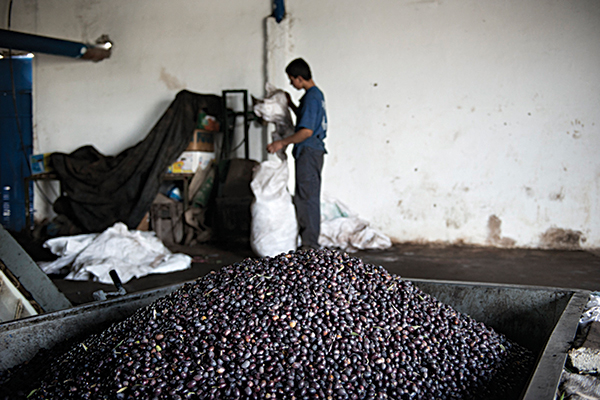
Another key resource that could contribute substantially to the Palestinian economy includes the over 20,000 dunums (2,000 hectares) of land suitable for quarrying in Area C. This particular sector is significant to the local economy as it holds the promise of creating an additional 15,000 jobs. However, under the current circumstances, the stone industry faces several challenges: it faces prohibitions on the importing of key machinery, costly export-related logistics, lack of investment due to investment restrictions, and an intense permit system that has prevented Palestinians from opening new quarries in Area C since 1994. These conditions have led to intensified and localized quarrying in and around fertile lands in Areas A and B. Currently, the stone industry in the West Bank is a key contributor to Palestinian exports with US$ 60 million in annual sales (17% of the total value), and with increased access, this contribution could generate – by a conservative estimate – US$ 241 million per year, an equivalent of 2% of the GDP. But as a number of quarries are coming to the end of their life-cycle, there is a fear of collapse across this industry. Thus, there is an urgent need for an overall critical assessment of stone quarrying and its effect on local climate, land use, and the environment.
Global tourism to the region and more specifically to the State of Palestine could open great opportunities for development and growth in the Palestinian economy. However, the current socio-political and legal climate plays a critical role in curbing the potential of the tourism industry, which holds the potential of competing with Israel’s hotel and tourism industry – given the overall security concerns of travellers in the region. Israel currently controls all land crossings and border areas, making access to the occupied Palestinian territory challenging for tourists who wish to visit the territory directly. All visitors and tourists are subjected to Israeli security protocols that pose restrictions on tourists who wish to visit, work, research, and invest in the State of Palestine. These challenges greatly curb the potential of the Palestinian tourism industry.
Another emerging industry is the Palestinian telecommunications sector which has proven to be competitive and lucrative. However, the barriers towards the telecommunications infrastructure in Area C drastically impact the growth of the sector. For instance, the current Israeli-imposed permit system prevents the construction of communication towers necessary for mobile service and impedes the laying of landlines and ADSL cables. Only 2G frequencies are provided to two Palestinian mobile operators, while the 3G spectrum is monopolized by Israeli companies. Furthermore, costs are excessively high for Palestinian consumers, as necessary equipment has to be imported at higher than normal market prices. The quality and service of Palestinian companies is lower than their Israeli competitors who have developed the necessary infrastructure in Area C. Some rough estimates suggest that the sector has the potential of increasing the Palestinian GDP by 0.5%, which would be equivalent to US$ 48 million in value.7
Therefore, if the current restrictions were to be relaxed, the Palestinian economy would benefit greatly from access to key trade routes, resources, and land that could be converted into profitable industries.
Barriers to Palestinian Economic Growth
By controlling Area C, the Israeli occupation has strengthened its grip over the local Palestinian economy of the West Bank. First, the security-political-development nexus plays a key role in how the Palestinian economy is curbed. Since the Oslo agreements, the Palestinian Authority was required to operate under a specific set of guidelines laid out by Israel. Within a structure that is shaped to sustain Israeli security above all, the Palestinian Government has limited room to manage its borders and resources and, therefore, its own development. Second, while recent years have witnessed a slow and steady growth of Palestinian businesses, the restrictions on trade continue to create barriers towards prosperity. Private investment and businesses continue to struggle under a system that controls critical aspects of what should be an open and free economic market space. For instance, the manufacturing sector, which is critical for export-oriented growth, has been stagnant since 1994 due to Israeli restrictions on the development of infrastructure and on the importing of necessary machinery, as well as by complete control over key internal crossings, which has a severe impact on the mobility of labour and goods. The viability and growth of an independent and sovereign Palestinian state is deeply tied to the control over territory, particularly Area C and its resources. Any sustainable plan towards serious economic growth and development must include Palestinian access to Area C and control of its local natural resources without restrictions to the movement of goods and labour.
1. B’tselem, (2013), Area C: What is Area C?, available at http://www.btselem.org/area_c/what_is_area_c.
2. Office for the Coordination of Humanitarian Affairs, (August 2014), Area C of the West Bank: Key Humanitarian Concerns, available at https://www.ochaopt.org/documents/ocha_opt_area_c_factsheet_august_2014_english.pdf.
3. World Bank, (October 2, 2013), Report: Area C and the Future of the Palestinian Economy.
4. A dunum is a unit of land area enclosing 1,000 square meters: 326,400 dunums is equivalent to 32,640 hectares.
5. World Bank Report, October 2013.
6. Ibid.
7. Ibid.

